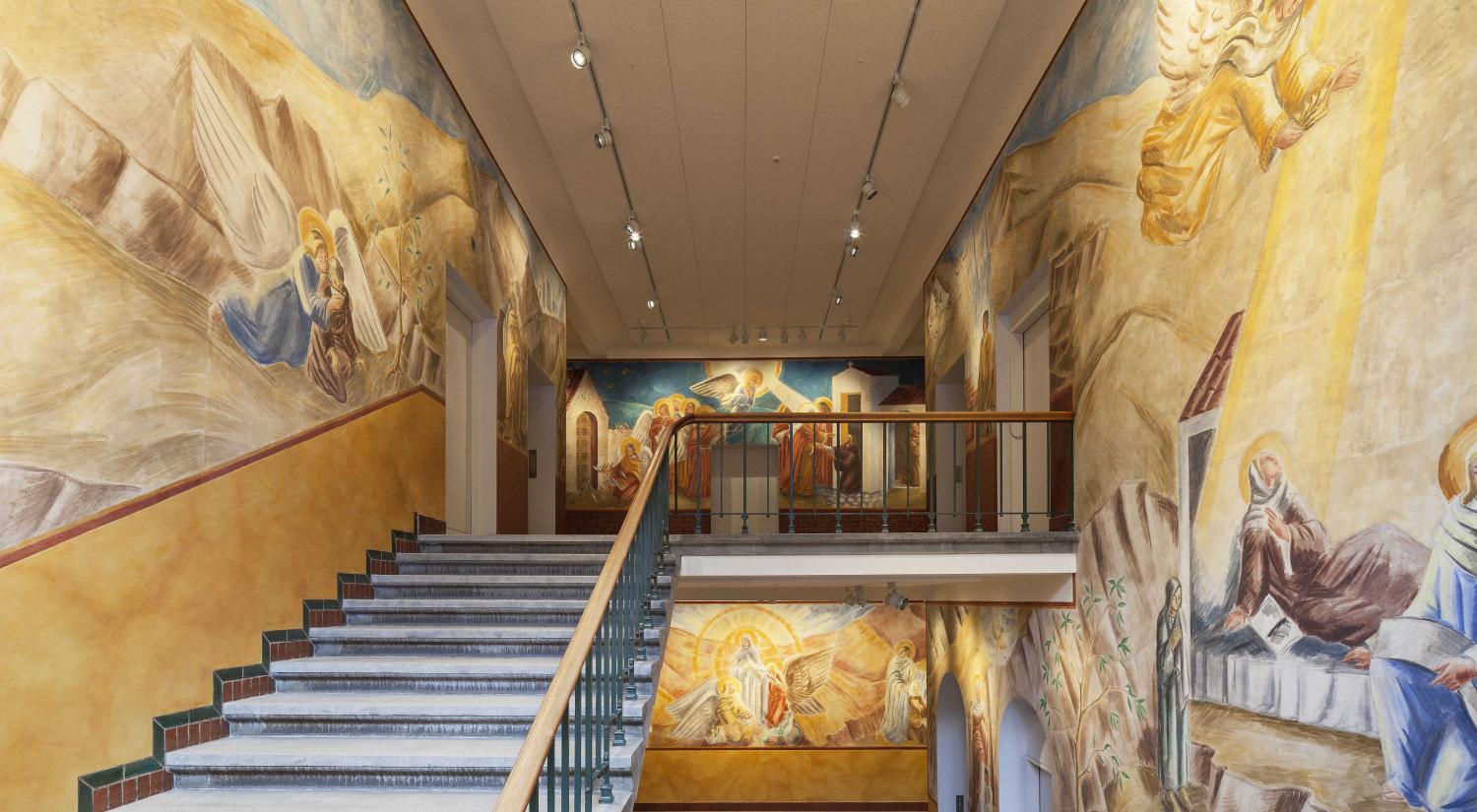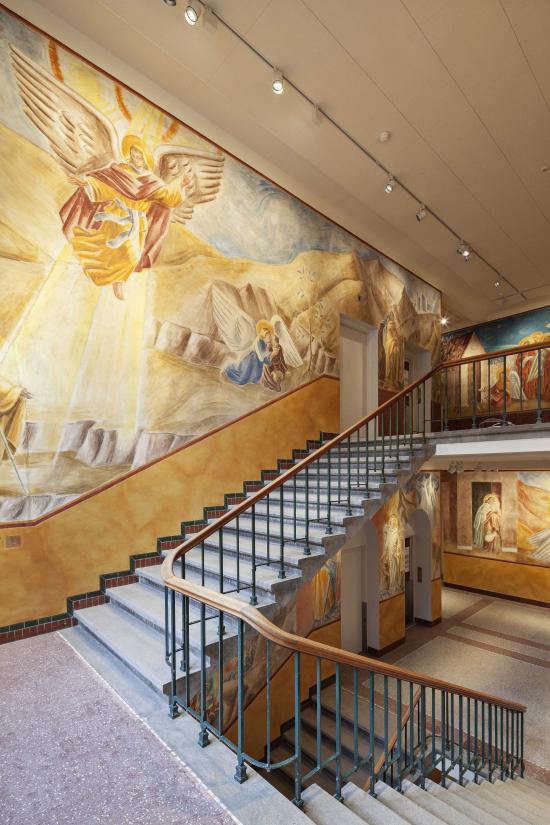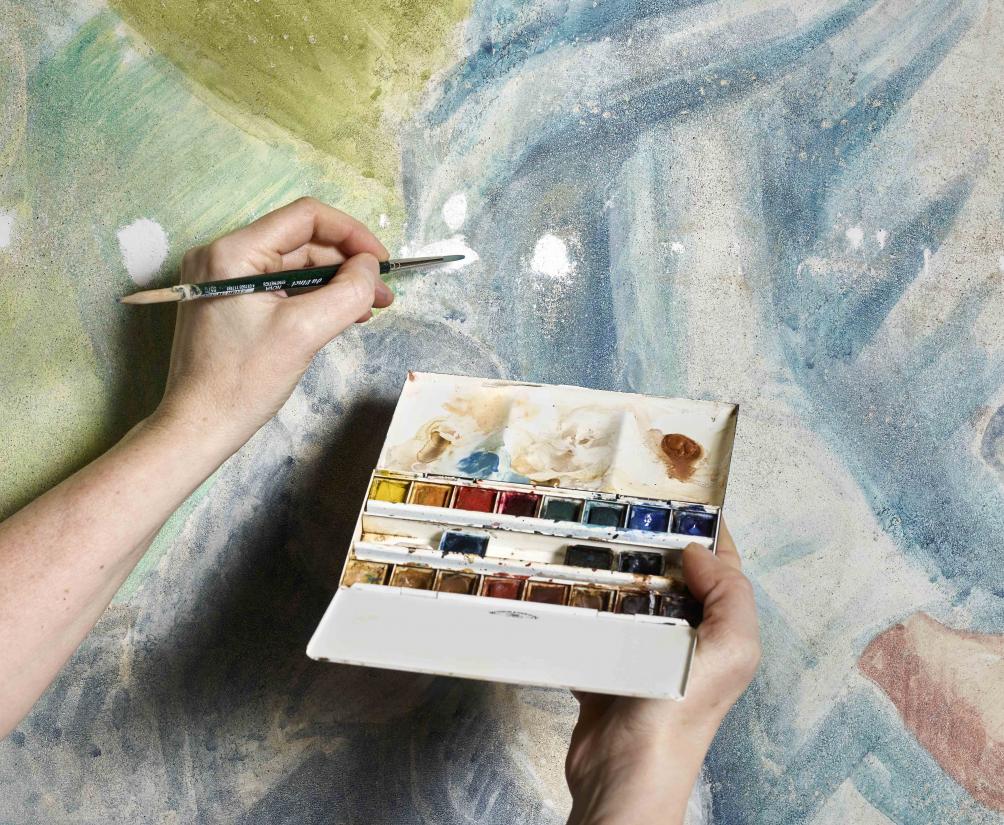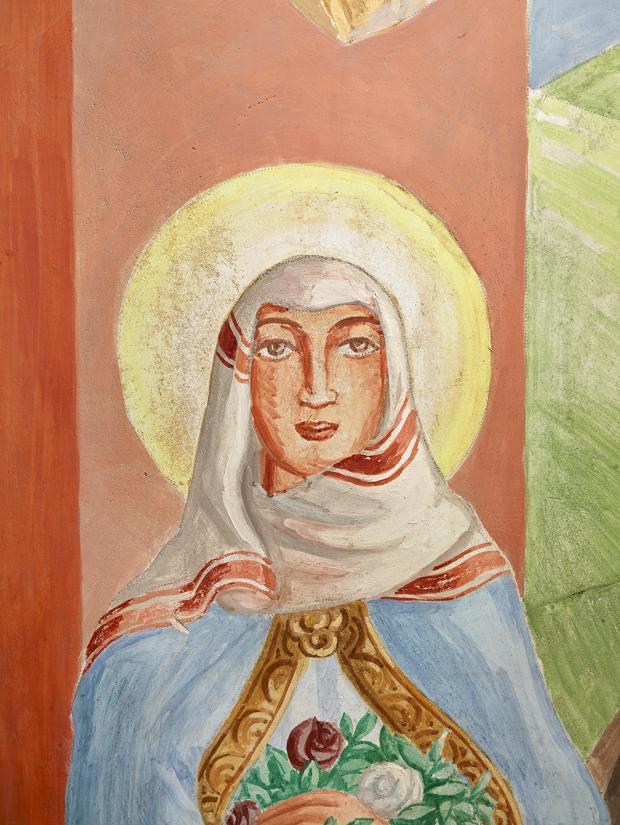Eight decades ago, Jais Nielsen (1885-1961) carried out one of the most important decorative projects in Danish art history at Sankt Elisabeths Hospital, but for years, the pictures had been overlooked and in need of cleaning. Now, they are brought into the light thanks to a research project and a thorough restoration.
Sankt Elisabeths Hospital was built in 1904-05, and in 1928-35, the hospital lobby and main stairs were decorated with a 350-square-metre fresco by Jais Nielsen. The decorative project, which was funded by the New Carlsberg Foundation, was the second-biggest of its kind in Denmark at the time, second only to Joakim Skovgaard’s frescos from 1901-13 in Viborg Cathedral.
Italian inspiration
The frescoes at Sankt Elisabeths Hospital deal with the legend of Saint Elisabeth of Hungary, depicting her charitable deeds and dramatic life. The pictorial narrative follows a classic style with references to early Italian Renaissance art, especially Giotto, whose frescos in Assisi Jais Nielsen had seen on a trip in 1920.
Today, the fresco decoration is an unusually well-preserved example of the decorative aspirations in the art of this period; it is both a significant work by Jais Nielsen and a valuable example of a period in art history, reflecting prevailing values and artistic effects at the time.
Over the years, however, everyday activities at the hospital had affected the frescos, causing the colours to lose their lustre; moreover, the surrounding building components had been repainted in colours that are very different from the original colour scheme. The rooms generally appeared dark, not only due to the murky colours but also due to less than ideal lighting.
Increasing recognition
Therefore, the New Carlsberg Foundation decided to fund a restoration of the fresco and a concurrent research project. The research project, which examines Jais Nielsen’s achievements and work from the perspectives of art history and social studies, was overseen by CATS, Centre for Art Technological Studies and Conservation, while the actual restoration work was carried out by conservators from the National Museum of Denmark.
In the early 1900s, the New Carlsberg Foundation funded several monumental decorative projects, the best known perhaps being Frederiksberg public indoor pool by Vilhelm Lundstrøm and Hjørring Library by Niels Larsen Stevns.
‘Jais Nielsen’s decoration at Skt. Elisabeths Hospital may be less well known, but it is nevertheless one of the largest and most interesting fresco decorations in Denmark. Jais Nielsen’s artistic qualities have become increasingly clear over the years. The New Carlsberg Foundation therefore decided to fund the restoration of this important work and also found it important to include a research component with the involvement of CATS and the National Museum of Denmark,’ says Karsten Ohrt, chairman of the New Carlsberg Foundation.






